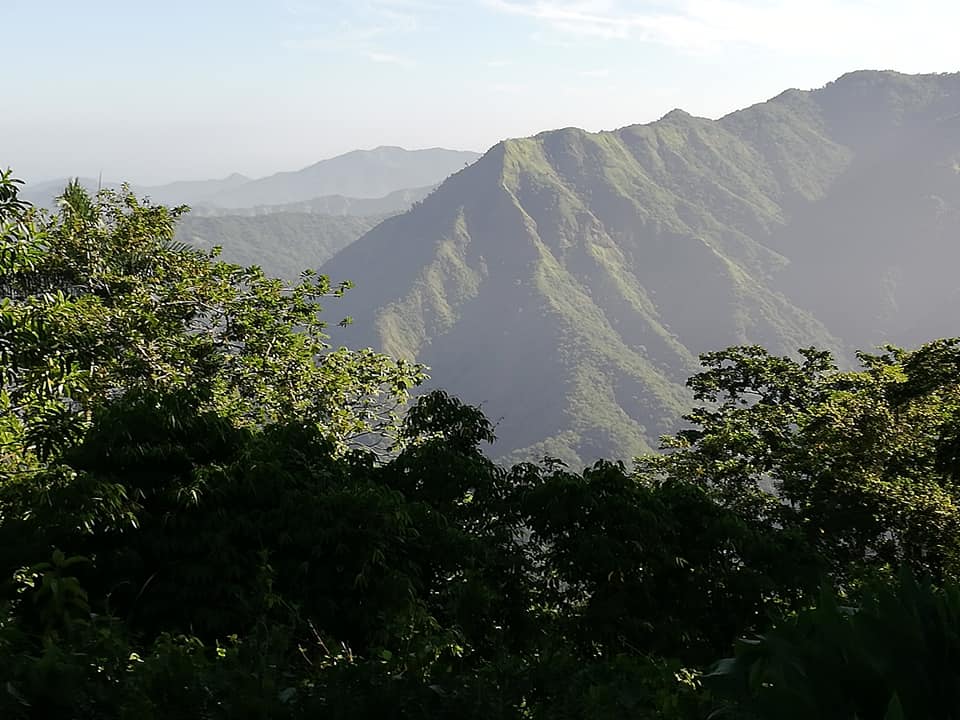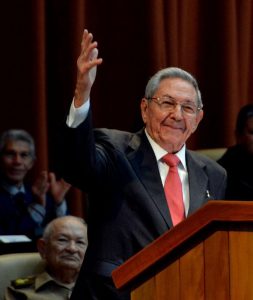
March 2, 2021, by Cuba Research Forum
The more things change ……
How will history remember Raúl Castro? Some time at the Cuban Communist Party’s next Congress (scheduled for 16-19 April 2021, Covid permitting) he will fulfil his 2011 promise to end his time as the Party’s leader. While the media will trumpet it as ‘the end of the Castros’, it is worth reflecting on what difference he made to ‘the Revolution’ in his 15 years as effective leader. That is a useful reflection, because it has taken the world a long time to get past some enduring stereotypes about him. So, let’s start the reflections with some of those stereotypes.
In 1958, before the rebels gained victory, he was relatively unknown in Cuba, explaining the puzzlement of US Embassy staff, trying to assess the shape of a future Cuba under the 26 July Movement. With characteristic Cold War thinking, they searched for the inevitable ‘red under the bed’, and identified two possibilities: Che Guevara (although unsure about his type of Marxism) and Raúl. As a student activist in 1952-3, he had joined the Cuban delegation to a Moscow-organised Youth Congress in eastern Europe, and also the communist PSP’s Socialist Youth (JS). So, however unclear Fidel’s Marxism then, Raúl was probably more clearly Marxist.
However, when Raúl returned, Fidel recruited him for the imminent attack (26 July 1953) on Santiago’s Moncada garrison. Raúl’s immediate agreement spoke volumes: joining the attack was a clear challenge to the PSP, who would go on to roundly condemn it, the Granma landing of December 1956 and the whole guerrilla campaign. Although he left the JS soon after, while the rebels prepared in Mexico for the landing, the PSP used him as a conduit for messages (to desist in the plan).
By then, however, Raúl had emerged. Although a foot-soldier in the Moncada attack (deputy to the group in the nearby hospital), he rose up the rebel ranks as his qualities became clear. If any dismissed him as simply Fidel’s younger brother (an image that followed him for decades, even leading to dynastic readings of his presidential election in 2008), his importance was becoming clear. It was he who introduced Guevara (in Mexico) to Fidel and the others; on the Granma he was a leader; after the rebels’ initial bloody dispersal, he led a small group of survivors to join up with Fidel’s group to create the basis of the guerrilla army in the Sierra Maestra.
There he came into his own, impressing everyone sufficiently to give him command (in mid-1958) of a separate front in another Sierra, where he led with military skill, political acumen and administrative efficiency, three qualities that would shape his later career. But they also helped shape external images of him. That was when ‘Raul the red’ emerged in US thinking, confirmed by a willingness (like Guevara) to collaborate with local PSP members in the final months. When, after victory, he advocated links with the Soviet Union, that interpretation seemed accurate, Raul being uniformly seen as ‘hardliner’, ‘ideologue’ or ‘the evil genius’ (behind the shift to communism), though the latter image of course contradicted his dismissal as a ‘kid brother’.
By 1960, he was clearly one of the Revolution’s three leaders; given command (and then ministerial control) of the new Revolutionary Armed Forces (FAR), his role in defending the Revolution against external threat was crucial. That FAR connection was what partly drove his enthusiasm for Soviet links, his relationship with the Soviet military remaining productive, although his strategy (a guerrilla-style ‘war of all the people’) differed from that recommended by his Soviet confreres.
There was another dimension to Raúl’s admiration of the Soviet Union, glimpsed in the Sierra: an appreciation of effective organisation and economic success, overriding doubts harboured about a lack of accountability in Soviet structures. In fact, his belief in an effective, accountable, internally democratic Communist Party (behind those doubts) remained consistent throughout, reflecting his preference for incentives, accountability and discussion. That preference made him welcome the less frenetic period of ‘‘institutionalisation’ from 1975, when structures replaced mobilisation, material satisfaction replaced moral incentives, and ‘the Revolution’ was ‘in transition to socialism’ instead of seeking to achieve communism rapidly. On the end goal, there was never any division between the brothers; both always saw ‘the Revolution’ for what it was: a long-overdue nation-building process to be achieved through socialism, the goal he had in mind in 2008 when he reassured doubters that he was no Gorbachev, seeking to ‘destroy the Revolution’, but someone ‘updating’ its socialism to ensure survival, to be achieved via a properly functioning Party, with full internal accountability, communication, regular five-yearly congresses, and not one which one joined for self-advancement and material gain. Moralistic like Fidel, he abhorred corruption.
Hence, in the post-1986 ‘Rectification’ strategy he was Fidel’s close collaborator and opponent (as often assumed): his emphasis was on preparing Cuba economically for the day which Gorbachev had warned them about: when the beneficial Cuban-Soviet relationship ended. When that ‘day’ turned out to be the Soviet collapse, unleashing the Revolution’s deepest crisis since 1959, Raúl spearheaded the drive for unprecedented reform to ‘save the Revolution’. Its rescue (statistically evident by 1995) was substantially Raúl’s work: with characteristic realism, he had managed to oversee a viable program to ‘save’ it all, achieved by cajoling reluctant comrades, by careful and patient negotiation, and by assuring the doubters that he would not ‘throw out the (ideological) baby with the bathwater’.
By 2006, many Cubans already knew the real Raúl: not the external stereotype but someone always central and committed to the revolutionary project, but someone sensitive to the need to adapt in order to realise it. As Fidel became unable to govern, Raúl, as the last of the historic leaders still standing and senior vice-president by right and not nepotism, was the logical and expected replacement, with a safe pair of hands but a clear determination to continue the reforms of 1991-3. However, everyone was shocked by his fierce critique on 26 July 2007, a year before being elected (by the National Assembly) to succeed Fidel: after the most hard-hitting and wide-ranging critique of ‘the Revolution’ which any leader had expressed, he called for a prolonged public debate (via all the Mass Organisations and Party) to discuss and develop it. It was accountability writ large, a level of communication absent since 1997 (the last Party Congress), which both legitimized and boosted the drive to complete the job begun in 1992-3. By 2011, he had won the argument, by balancing negotiation with threat cajoling and forcing the pace, with his motto: sin prisa pero sin pausa (not hastily but without stopping).
The result is the Cuba that we saw before Trump and Covid hit the world: a Cuba changing faster than many expected (and duly recognized by the United States, albeit with the embargo still firmly in place) but still pursuing the 1959 goal. In 2008, he had vowed to achieve two goals before leaving the presidency in 2018: the long overdue end of the corrosive and frustrating dual currency (necessary in 1993 for hard currency but a source of inequality) and a new Constitution to reflect change since 1976. In 2018, it seemed that he had failed to achieve either goal, leaving Miguel Díaz-Canel to handle those thorny problems.
However, we got it wrong. He might have retired as president, but was Party leader until 2021, leading a younger Party (Raúl having brought in a new generation at provincial level) and, thanks to his efforts since 2011, less able or likely to interfere in government. He was now free to focus on those two elusive goals.
In due course, he was asked to lead the commission drafting the new Constitution. The result was as one might have expected: substantially the same as in 1976 in its ideological definitions (although now including Fidel’s thoughts, alongside Martí and Marx, as inspirations for the whole ethos) and on the electoral system but updated to address the post-1993 reforms. But, perhaps significantly, it restructured governance, creating four potential poles of decision-making. The president (of the Republic and not just the Council of State) would still be elected indirectly, but with only one vice-president, instead of 6 or 7; a prime ministership (gone since 1976) was restored for day-to-day government; the new Council of State (more advisory, based on specialist expertise rather than political service) would be chaired by the president of the National Assembly; finally, there would be the Party leader. It all seemed to reflect Raúl’s known doubts about the concentration of power before 2008.
And then came Covid-19, bringing new and deep crisis but also accelerating change, including the wholesale changes recently announced and soon to be enacted. The fusion of the two currencies in January 2021 caught everyone by surprise, bringing real challenges for many but perhaps longer-terms benefits for most, while the massive extension of self-employment envisaged a sweeping restructuring of the state-private relationship. Neither reform would have been proposed without Raúl’s ideological approval; the only question was when.
Hence, far from failing, it may well be that Raúl managed to address both issues to which he committed himself. History may well record him as something of a success. Completing Jean Baptiste Alphonse Karr’s quote (implicit in the title of this blog), Plus ça change, plus c’est la même chose (the more things change, the more they stay the same), it may well be that Raúl achieved exactly what he set out to do: reform, update, restructure, streamline everything precisely in order to preserve the Revolution’s essence and original goal, now made more relevant for ordinary Cubans. Job done, you could say, and as you might have expected.

Professor Antoni Kapcia

This may be controversial but might I suggest that Raúl’s greatest legacy may turn out to be Miguel Diaz Canel? He oversaw the selection and grooming of his successor and so far it seems as though it was a terrific job. The manager that he is meant Raúl was the man to handle the succession, lucky for Cuba that he was there – the right guy at the right time.
I agree with Stephen but its still too early to make a judgement. the transactional environment and challenges facing Cuba now are considerably more serious than those that were in place during Raul’s short leadership. The monetary unification (finally!), loss of divisas from tourism and the slump in remesas are all coming together to create a very difficult situation. If the non-state sector continues to grow and cuentapropismo is joined by the growth of a significant sector of small and medium enterprises the resulting income inequalities (class and regional) will require very careful handling.Hopefully, MDC will not be persuaded to retreat by the dogmatists. It will be interesting to see how the Biden administration responds to the deepening of the Lineamientos package.
How easy it must be to praise the Cuban govt from the comfort of your climate-controlled office/house, knowing that your next meal is secure, and especially knowing that you can be critical with your own government or capitalism as a whole without fear of repression. Things like this further legitimize an abusive dictatorial government without regards for human life or dignity. As a Cuban who was born and raised in the island, who lived the average life of the average citizen I can assure you that you have a much idealized notion of my country. It is not a leftist utopia, and portraying it as such is dangerous, and affect real people with real problems foreign to those who haven’t lived the real Cuba. Please stop